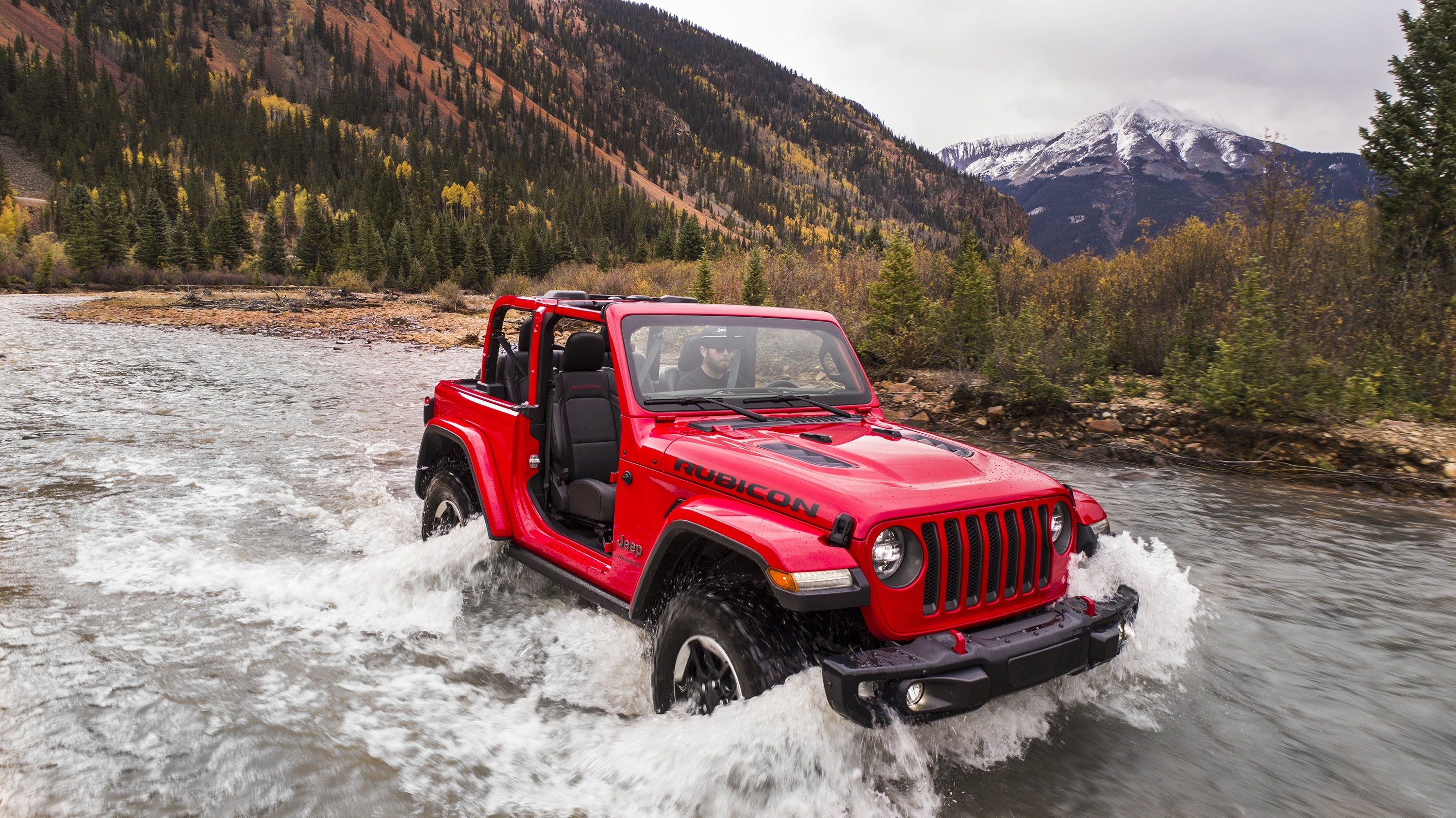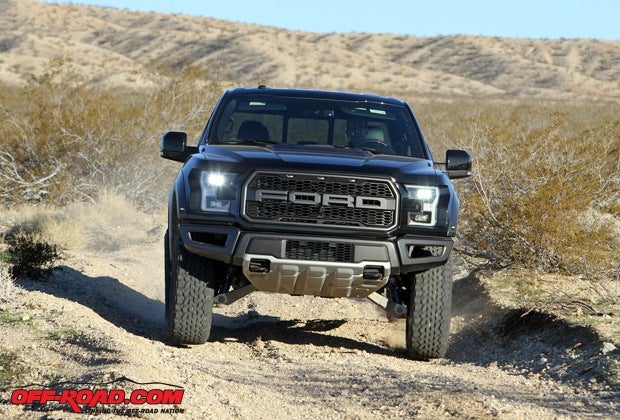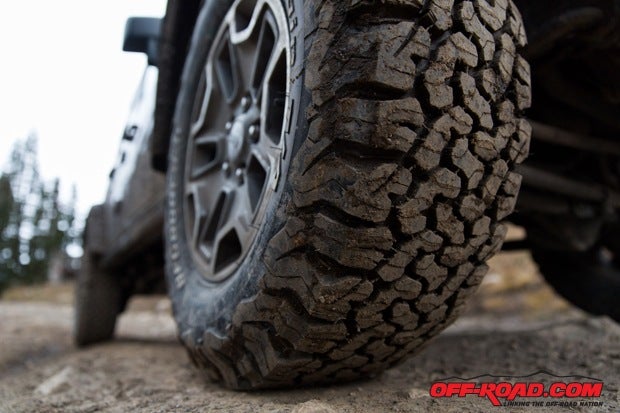 This week in L.A., Jeep finally pulled the wraps off its new Wrangler. Now we’ve seen it for ourselves and had the chance to digest its specs, let’s see how the two-door Rubicon compares to a couple of other off road brutes.
This week in L.A., Jeep finally pulled the wraps off its new Wrangler. Now we’ve seen it for ourselves and had the chance to digest its specs, let’s see how the two-door Rubicon compares to a couple of other off road brutes.
Ford’s F-150 Raptor achieved legend status the moment its test drivers launched the thing off a sand dune at warp speed, with its incredible suspension soaking up the landing. Toyota joined the off-road party when it applied the TRD Pro trim to its Tacoma pickup truck.
READ MORE: 2018 Jeep Wrangler JL Revealed: Get All the Details Right Here
We’re not trying to say these three machines are directly comparable – two are pickups, after all, and not even the same size pickup – but it is a fun exercise to see which one has the better basic advantage as these three represent some of the most off-road-ready packages you can bring home from a dealership.
So which of these off-roaders wins on paper? Let’s take a look.
It’s About Clearance, Clarence
Without an appropriate measure of air between the vehicle and terra firma, your off-road expedition will be cut mighty short by way of getting high-centered on the first obstacle. If you’re in the Toyota, a full 9.4-inches of ground clearance is on tap, while the Raptor sanctions an 11.5-inch allowance. The new Rubicon? It neatly splits the difference at 10.8-inches.
Angling for a Win
All the ground clearance in the world won’t do much good if your vehicle bumps up against every rock with the subtlety of Harvey Weinstein bumping up against Hollywood starlets. The approach, breakover, and departure angles are a key measure to off-road fun. The two-door Rubicon answers this question with a scarcely believable 44-degree approach angle. Its maximum breakover angle measures 27.8-inches, while it leaves the party with a 37-degree departure angle.
The Raptor, for its part, boasts a 30.2-degree angle of approach, 21.8 degree ramp breakover angle, and 23-degree departure angle. Those numbers are certainly respectable, but the TRD Pro Taco has it beat with an approach angle of 35 degrees, a departure of 23.9, and a breakover of 26 degrees. Still, the Jeep takes this round.
Have Wheel, Will Travel
It’s important to remember suspension travel is not the same as a suspension lift. Wheel travel is the full range of bounce, from fully compressed to fully extended, with the normal cruising position being somewhere in the middle. The 2017 Raptor is touted as having a full 13-inches of suspension travel up front, and 13.9-inches of travel in the rear. This is thanks to trick Fox Racing shocks which manage extension and rebound with aplomb.
On the Toyota, TRD-tuned Bilstein shocks provide a solid inch to inch and a half of extra wheel travel compared to a stock Tacoma. Jeep’s new Wrangler should be in the same ballpark, with proper numbers still under wraps.
Feeling Tired
Absent of the right tire, being able to deploy all those gonzo specs listed above will be a difficult task. Manufacturers often go through several different iterations of a tire during testing before settling on the one that actually appears in the showroom. At Toyota, the TRD Pro wears shoes sized 265/70R16 mounted on trim specific black alloy wheels. The Japanese company does list them as P tires, however.
No such tire is found on the Raptor, with Ford choosing an aggressive 315/70R17 version of the accomplished BFGoodrich All-Terrain T/A KO2 tire. The knobby KO2 is race proven in the Baja 1000, so Raptor owners can brag to their friends that the rubber on their truck shares much with those found on trucks entered in the grueling desert race. LT tires are also found on the new Rubicon, measuring a healthy 285/70R17. They, like those found on the Raptor, are BFGoodrich KO2s.
Worm’s Eye View
To the uninitiated, all off-road gear under a rig looks the same. We know the difference, though, right? Those choosing to buy a new Rubicon Wrangler will find themselves in possession of a pair of Dana 44 axles equipped with electronic Tru-Loks housing 4.10 gears. Its NV241OR transfer case has a low-range ratio of 4.0:1.
The Raptor has 4.10 gears and an electric manual locker stuffed into a corporate Ford 9.75 rear axle. This stout diff keeps those BFG tires turning in the sand and in the rocks even if you get the truck flexed out enough to lift a tire. The Tacoma TRD Pro, meanwhile, fills its 4×4 transfer case with a 2.57:1 ratio and hooks it to a locking rear diff equipped with 4.30’s in stickshift Tacos.
Power Play
At launch, the new Wrangler Rubicon will be offered with a choice of two engines: a 3.6L V6 making 285 horsepower or a 2.0L turbocharged inline-four spitting out 270 horses. A manual transmission is only available with the V6. In the Toyota showroom, off-roaders will find a 3.5L V6 under the hood of the Tacoma TRD Pro with 278 horsepower on tap. A stickshift is available here, too.
The Raptor, naturally, bests them both with its boosted 3.5L V6 which provides a rip-snorting 450 horsepower meted through a 10-speed automatic. Sure, its exhaust note sounds like Marilyn Manson screaming obscenities into a vacuum cleaner hose but we’re wagering that as you’re clearing a sand dune at 60mph, you won’t care at all about how the engine sounds.




 Your Privacy Choices
Your Privacy Choices